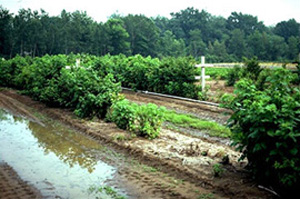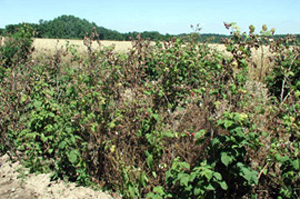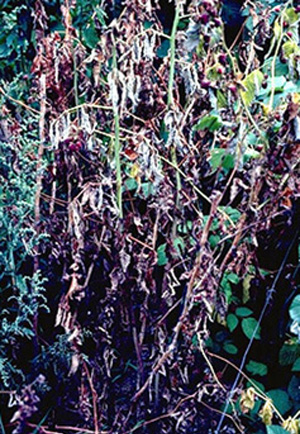Phytophthora Root Rot (Phytophthora spp.) – is a common cause of wilting in red raspberries. It mostly occurs in heavy soils, where standing water occurs, or where plants have been heavily mulched.


Canes suddenly wilt and turn brown at the onset of warm temperatures, usually in June.

Field diagnosis involves removing the outer layer of epidermis on the roots and canes. Phytophthora infection is usually expressed as a chocolate-brown coloration of roots with a sharp transition to white, uninfected wood within the roots or crown.

More information:
- Phytophthora Root Rot of Raspberry – (Ohio State University)
- Notes on Raspberry Diseases: Phytophthora Root Rot -(OMAFRA)
- Phytophthora Root Rot of Caneberries -(University of California)
Use these resources if you need additional help with diagnosis and to find solutions to your problem.


